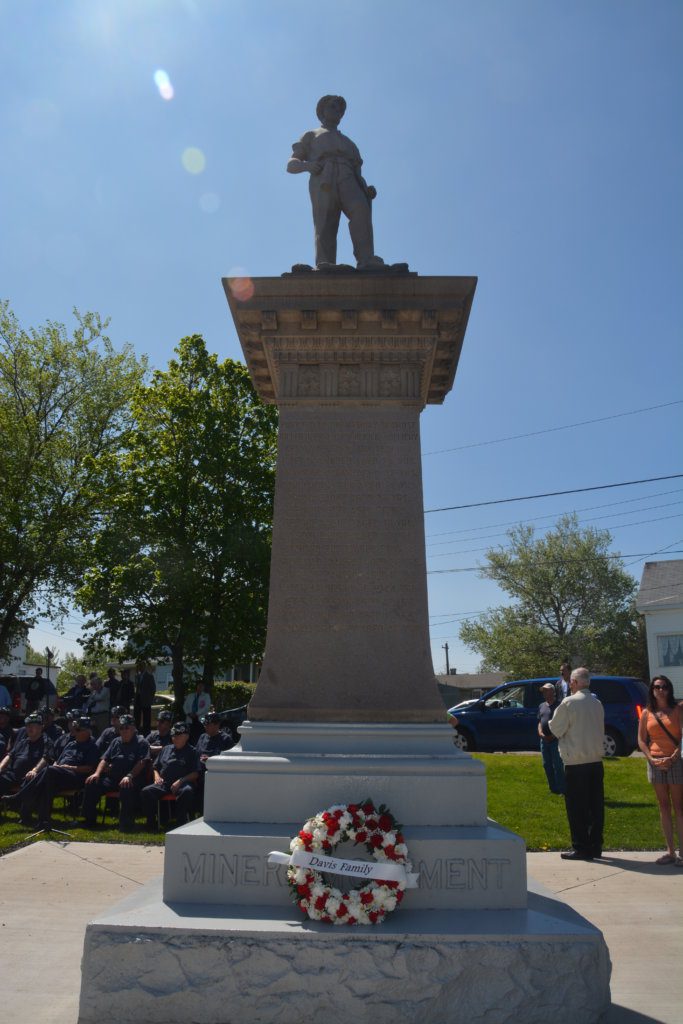Source: FightBackNews.org
Ludlow, CO – On June 23, a commemoration of the Ludlow massacre took place, sponsored by labor unions, local officials and Greek and Greek-American civic and religious organizations. They gathered here to unveil a remarkable memorial: a new statue of strike organizer and Ludlow martyr Louis Tikas.
“Louis Tikas plays an important role in our community’s local history for his contribution to the 1913-14 strike,” said Yolanda Romero, event organizer in Ludlow.
An immigrant from Greece, Tikas was murdered in 1914 during a strike by 13,000 miners. Tikas was responsible for the striking miners’ camp, including women and children, after they were expelled from coal company housing. An eyewitness, a sergeant, said Lieutenant Karl Linderfelt broke a rifle butt over Tikas’ head and ordered him shot during the raid on the miners’ camp. Tikas was later found dead, with two others, shot in the back.
The Ludlow Massacre occurred when the Colorado National Guard and company thugs burned the miners’ tents and shot people in the camp, killing 13 children, two mothers, and number of miners. Folk singer Woody Guthrie memorialized the dead in his famous song Ludlow Massacre.
Miners were demanding an end to company scrip (money), company stores, company doctors, and coal company security goons enforcing a closed camp, like today’s detention centers. The miners wanted an eight-hour work day, enforcement of Colorado mining safety laws, and most importantly – union recognition.
Coal miners in Colorado were ready to strike after hundreds were killed in the years leading up to 1913. In 1910, one explosion killed 79 miners in Colorado. Mine owner John D. Rockefeller wrote in his reply letter, “How come the company is not growing faster?”
In response to the Ludlow Massacre, the United Mine Workers of America (UMWA) armed around 1000 miners, who shut down more than six mines. For the next ten days, miners were in charge and shot anybody who dared to oppose them with weapons. The Colorado Coalfield War left around 50 coal company thugs and state militiamen dead. Federal troops were called in to prevent the miners from seizing control.
The coal miners called off the strike in December 1914 with no immediate victory. However, the miners soon made gains in safety standards, including an end to child labor in the coal mines. The Rockefeller-owned mining company soon created a company union.
“I used to be a coal miner, and I stand on the shoulders of these people. They set the table for addressing health and safety issues in the mines, as well as other benefits such as wage increases which have trickled down to workers in other industries,” said Bob Butero, Region 4 Director, UMWA.
Butero concluded, “All workers should remember the sacrifice of martyrs such as Tikas.”
National leaders and rank-and-file members of the UMWA, and Sara Nelson, president of the Association of Flight Attendants, AFL-CIO, attended the unveiling. Also attending were Louis Tikas’ relatives from Greece, members of several Greek-American organizations, and the Honorable Gregory Karahalios, Greek Consul General in Los Angeles, Also honoring Tikas were local government officials from Trinidad and Las Animas County, Colorado, and many supporters from across Colorado.
“If we ask if he lost the battle? At the end, we will say no. He didn’t lose. He might die, but he died for a cause. And his cause is still alive today! We need people like him to be our guiding light in everything we do,” said Consul Karahalios, who spoke with great pride.
Cecil Roberts, president of the United Mine Workers of America, said about Louis Tikas, “He is indeed a hero in the United Mine Workers. He is a working class hero. And he is an American hero.”
Written by: Tom Burke and Shaine Carrol-Frey




